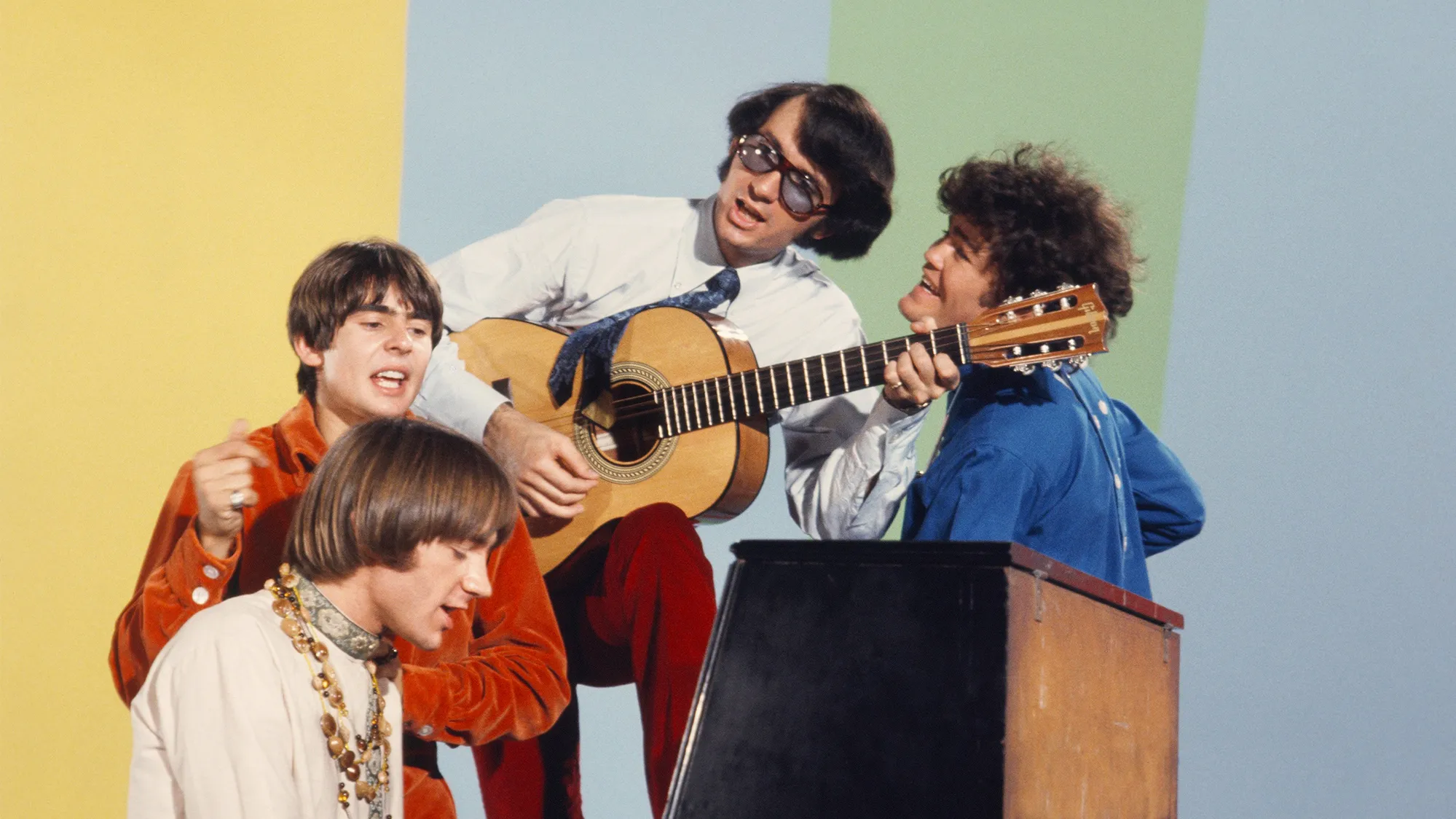The Monkees: Overview and Impact as Music Artists
The Monkees, formed in 1966, were an American pop-rock band created for the television series of the same name. Comprised of Davy Jones, Micky Dolenz, Michael Nesmith, and Peter Tork, The Monkees initially faced skepticism due to their origin as a “manufactured” band. However, they quickly proved their musical talent and gained massive popularity with their catchy songs, comedic style, and groundbreaking television show. With hits like “I’m a Believer,” “Last Train to Clarksville,” and “Daydream Believer,” The Monkees became pop icons of the 1960s, and their impact on music, television, and popular culture endures today.
Key Phases in The Monkees’ Career
- Formation and TV Success (1966-1967): The Monkees were cast through an audition process to star in a television show about a fictional band inspired by The Beatles’ A Hard Day’s Night. Their self-titled debut album, The Monkees (1966), was a commercial success, featuring “Last Train to Clarksville,” which became a number-one hit. The TV show was an instant hit, combining music with comedy in a format that influenced future generations of musical television.
- Growing Musical Independence (1967-1968): While The Monkees’ music was initially performed by session musicians, the band members soon pushed for creative control. By their third album, Headquarters (1967), they played their own instruments and contributed to songwriting. The album was well-received and reached No. 1 on the Billboard charts, marking a critical turning point in their credibility as musicians. Songs like “Pleasant Valley Sunday” and “Randy Scouse Git” reflected a shift towards more sophisticated songwriting and thematic content.
- Experimental Work and Decline (1968-1970): Their film Head (1968), co-written by Jack Nicholson, was a psychedelic, avant-garde departure from their family-friendly image, which confused fans but gained a cult following over time. Despite critical acclaim, the film’s commercial failure marked the beginning of The Monkees’ decline. By 1970, the band had disbanded, but they left behind a legacy of influential work that transcended the initial “manufactured band” label.
- Reunions and Legacy (1980s-Present): The Monkees reunited periodically, enjoying renewed popularity in the 1980s with the “Monkeemania” resurgence and MTV airing their TV series. In 1986, they embarked on a successful tour, and in 1996, they released Justus, an album that marked their first self-produced effort with all four members since Headquarters. Subsequent tours, tributes, and reissues have continued to celebrate their contributions to pop music, with their last album, Good Times! (2016), receiving positive reviews for its nostalgic yet fresh take on their classic sound.
The Monkees Official Videos Playlist:
Musical Style and Themes
The Monkees’ music is characterized by upbeat, catchy melodies, blending pop-rock with elements of folk, psychedelia, and later, more experimental sounds. Their songs often deal with themes of love, optimism, and youthful energy, which resonated with a generation of fans. Over time, as they gained more creative control, their music grew more complex, incorporating social commentary and reflective lyrics, as seen in songs like “Pleasant Valley Sunday,” a critique of suburban life.
Legacy and Influence
- Impact on Pop and Rock Music: Despite initial skepticism, The Monkees’ music achieved mainstream success, earning them a place in the pop music canon. Their songs, written by some of the era’s best songwriters, including Neil Diamond and Carole King, became chart-toppers, influencing pop music’s sound. Bands such as Weezer, R.E.M., and The Beatles themselves acknowledged The Monkees’ catchy style and contributions to pop and rock.
- Influence on Television and Pop Culture: The Monkees’ TV show pioneered a format that combined scripted comedy with musical performances, a precursor to music videos and the visual style embraced by MTV in the 1980s. The show’s fast-paced editing, slapstick humor, and surreal elements influenced subsequent television series, from The Partridge Family to Flight of the Conchords, showcasing the lasting impact of their innovative, genre-blending approach.
- Paving the Way for Artists’ Creative Control: The Monkees’ fight for creative autonomy helped inspire future artists to seek more control over their music. Their efforts, particularly in producing Headquarters, set a precedent for bands challenging industry practices, showing that they were more than a “manufactured” group and cementing their status as respected musicians.
- Enduring Cultural Influence and “Monkeemania”: The Monkees’ popularity and influence extended beyond music. Their distinct fashion sense, optimistic themes, and fun, accessible songs appealed to young audiences, creating a cultural phenomenon that defined a generation. Today, their music and TV show remain beloved, with songs like “Daydream Believer” continuing to resonate, and their influence is evident in the rise of music-driven television and media.
The official YouTube channel of The Monkees:
https://www.youtube.com/channel/UCv1oY0OLtsEySHeP1TkYNqA
Conclusion
The Monkees’ journey from a television creation to respected musicians and cultural icons demonstrates their unique place in pop music history. They broke barriers in music, television, and popular culture, inspiring future generations with their innovative approach and refusal to be defined solely by their origins. Their impact is seen not only in their memorable songs but also in the creative freedoms they championed, leaving a legacy of fun, artistry, and individuality.
References:
- Lefcowitz, E. (2011). The Monkees Tale. Plexus Publishing.
- Sandoval, A. (2005). The Monkees: The Day-by-Day Story of the 60s TV Pop Sensation. Backbeat Books.
- Geller, L. (2006). “The Monkees: From Manufactured to Respected Artists.” Rolling Stone.
- “The Monkees.” Rock and Roll Hall of Fame, archived induction nomination notes.


Leave a Reply